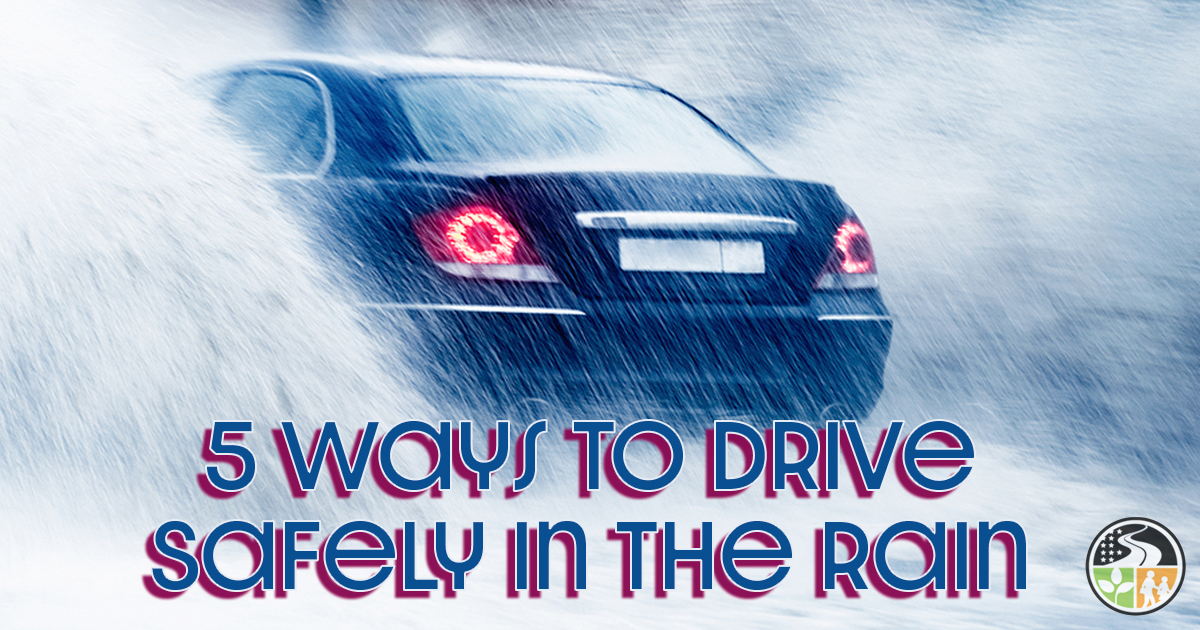5 Ways to Drive Safely in the Rain

Dealing with heavy rains while you’re behind the wheel is not just a nuisance. That violent downpour is actually dangerous. In fact, in the United States, half of all flood fatalities involve vehicles.
Staying safe while driving in the rain is possible. In this article, we’ll go over five ways you can master the elements and drive safely in the rain.
Prepare ahead
Although you don’t know when a rainstorm will hit, you do know that eventually, you will encounter one. That’s why preparing in advance is essential. It’s also easy to do. To be prepared to drive in heavy rain, what should you check on your vehicle?
Windshield wipers. If your windshield wipers are worn out or damaged, change them.
Brake pads. Check your brake pads regularly to make sure they’re in good condition. If they’re grinding or squealing, that’s a sign they need attention.
Tires. Older tires don’t hold traction as well and may make your vehicle hydroplane. Replace worn tires.
Keep ‘em clean. Keep your windows clean on both the inside and the outside.
Don’t underestimate the power of water
Although a puddle might look insignificant, don’t underestimate what it can do. Your vehicle will float in just two feet of water. Avoid driving through low-lying or flooded areas. Don’t drive fast through any water and avoid fast-moving water. Take the time to turn around and find another route.
Visibility
When the rain is pouring down, turn on your headlights. While this may not help you to see better, it will help you be visible to other vehicles. When your headlights (and thus taillights) are on, drivers can see you both from the front and the back, and you can avoid getting rear-ended.
Traction
Tires don’t grab a wet road as well as they do a dry one. When your tires pass over a wet surface, they push the water away and maintain traction. The problem is when there is too much water on the road for the tires to displace.
That’s the point when the tires lose contact with the road surface, which is called hydroplaning. You’ll know when it happens—you’ll get the sickening feeling of your vehicle skidding with no apparent way to control it.
If your vehicle does not have an ABS (antilock braking system), you can keep your wheels locking by pulsing on the brake pedal. However, if your vehicle does have an ABS, your vehicle can manage the situation and you shouldn’t pulse on the pedal.
Speed
The speed limit was created for optimal conditions, not heavy rain. If you are driving in heavy rain, stay below the speed limit, so you have time to react to any unexpected situations. Also, you don’t want to be rushed (and tempted to speed) in a downpour. Leave early so you can take your time to navigate through potentially flooded roads.
- 2023
- 2022
- 2021
- 2020
- 2019
- 2018
- 2017

